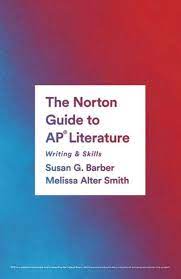Poetry March Madness is the most electrifying poetry unit I have ever created.
How do I know?
Each year that I have taught this unit, students have become visibly frustrated or disappointed when the poem they loved does not win. Some have left class at the end arguing with a friend over votes. Some have erupted in celebrations of victory. The passion for poems becomes palpable and contagious.
When was the last time a poem elicited such strong emotions?
Poetry March Madness takes its inspiration from the NCAA college basketball tournament, the yearly event in which 68 teams compete to determine the national champion. In my class, we mirror and modify. My bracket has 32 poems. I don’t rank the poems like the NCAA tournament but just like the actual March Madness, mine is single-elimination. Once a poem loses, it is out for good.

The unit has a few broad goals:
- to expose students to a wide variety of poems
- to help them cultivate their own taste for poetry
- to scaffold frameworks that will help them analyze and understand poems
- to make the appreciation of poetry an enjoyable enterprise
Before I get into the progression of how I set it up, what happens each day in class, and what the students do, here is an overview of some key elements in the unit.
- 32 poems are involved
- After reading and discussing the two poems that are matched up, we vote in class to determine the winner (I have found that the most efficient way is to ask for a show of hands and tally the votes)
- The unit takes about three weeks to complete ( I see my students for 42 minutes every day)
- students will build skills incrementally in the unit, first learning how to identify a poem’s tone, its use of language, then its subject/theme.
- students will develop their own internal rubric for poetic excellence
- Throughout it all I try to create as much suspense and anticipation as possible by hyping up the poems, the voting process, and the excitement.
PREP WORK
The first thing I do is find 32 poems by going to the AP Literature Facebook group and asking teachers across the country for their suggestions. If you want to save some time, you can see this year’s bracket as all my resources and materials for this unit at the end of this post.
Once I have the 32 poems, I have the students make the brackets. BIG BRACKETS! I’m talking about four huge pieces of paper taped together BIG. The students measure the paper, do the math on the spacing, and mark all the lines..
Here is what it looks like:

THE LEARNING OBJECTIVE FOR EACH ROUND
1st Round (32 poems, 16 brackets)— Since we have to get through 32 poems in the first round, we have to move quickly. We can’t analyze everything about every poem. That’s why I have a reading focus for each round. For the first-round brackets, we read the two poems in a bracket twice. Then we focus on each poem’s tone. The graphic organizer for tone allows them to record their observations. Then I ask 2-3 students to provide a favorite line or section. Finally I will ask students to offer a good argument for the poem they enjoyed more because it might help sway someone that is on the fence. Finally we vote on the superior poem.
In my 42 minute class period, I can sometimes get through three brackets, but never four. That means we read, annotate, and discuss six poems in one day.
There is a good pedagogical reason why I start with tone. A few years ago, members of the AP Literature exam developed a PowerPoint slide with suggested areas of improvement for teachers and students. One of the most important pieces of advice that it provided for the poetry essay was that it was not enough to merely identify literary or poetic devices. Students often overlooked or neglected tone.
This reinforced what I was seeing in my own classroom and in my years of experience as an AP Reader. Students would always first identify devices — they would spot the similes or personification in a poem. They even summarize how it worked. But that’s where their analysis stopped. All too often, they failed to see the tone behind those devices and what was implied in that tone. Meaning and complexity were absent in their writing.
This is what separated upper-level essays from lower-level ones. Upper-level essays detect the attitude of the speaker and explain its impact on the other devices. Also, on the multiple-choice section of the exam, students struggle with tone because their vocabularies aren’t broad-ranging to consistently score well. Throughout the course of this week, we are looking at shifts in tone, we are identifying the right word (check out this post on teaching tone), and we are discussing the impact tone has on the overall effect of the poem.
I use a list of 35 tone words that I created years ago. Vocabulary.com also has a good list of AP tone words.
Sometimes I will assign poems to be read for homework so that when students come back the next day, they are prepared to dicuss and vote. In addition, I assign one poetic precis (examples are available in the resources) each night for homework to sharpen their writing skills.
The first round (16 brackets) typically takes a little over a week. 16 poems move on to the second round, 16 poems get eliminated.
2nd Round, The Sweet 16 (16 poems, 8 brackets) — During the second round students see poems for the second time. They already have a basic understanding of the poems, so we develop a more complex appreciation by examining their use of language. I want to build on students’ understanding of tone by examining the diction, the syntax, and the use of figurative language.
Once again, we use a graphic organizer for quick annotations. We discuss a poem’s merits. I call on a few students to make impassioned pleas on behalf of a poem. Then we vote. Once again, a poetic precis is assigned most nights for homework.
Eight poems get eliminated, 8 move on to the Elite Eight.
3rd Round, The Elite Eight (8 poems, 4 brackets) — At this point, the discussions and voting get intense. Students are seeing poems for the first time and have strong attachments to some. This is when you will see students arguing during and after class over the merits of a poem.
During the third round, and with only eight poems remaining, we focus on the poem’s subject and theme. While students will have certainly mentioned subjects and themes in earlier rounds when they advocated right before voting, this round is all about seeing the richness and complexity of these works. I have a list of 50 common subjects in literature that we use as our reference, and it is eye opening for students to see how many of them are evident in the eight remaining poems. It is eye opening because they can typically articulate 2-3 on their own without the list, but with the list in hand, they see 10, 15, sometimes 20 subjects within a poem.
This is crucial.
This round helps expand student confidence. If a student can identify 10-20 subjects that a poem tackles, it gives them 10-20 things they can address in their writing. They see so many opportunities for analysis. A poetic precis is assigned roughly every other night for homework.
Four poems get eliminated. Four poems move on.
4th round, THE FINAL FOUR (4 poems, 2 brackets) — In the final four, I develop essay prompts for ask the four poems remaining, and students will write an essay for each bracket explaining why they believe one poem is superior. They must analyze the parts of the poem and explain how those parts influence the meaning.
Final round, THE CHAMPIONSHIP (2 poems, 1 bracket) — Rather than write another essay, we have a whole class discussion, which really turns into a debate, on the merits of the final two poems. Both are exceptional, but there can only be one winner.
When the discussion has reached an end, we do a secret ballot and I read the votes while a student puts the tally marks on the board. I’m trying to create as much suspense and anticipation as possible because many of the students have become attached to these poems over the course of the unit.
RECAP OF POETRY MARCH MADNESS
- This unit consumes roughly three weeks in my class
- We read 32 poems over the course of the unit. Each day we get through a handful of poems (usually six) by looking at them two at a time, then we vote on the better poem.
- We do not read all 32 at once.
- I don’t ask them to analyze everything at once. Each round has a framework (analytical focus) to help students understand how a poem operates without overwhelming them.
- I use graphic organizers and handouts to help students articulate their annotations.
- Students are writing throughout the unit by completing a poetic precis for homework.
- Students get emotionally invested in certain poems!!!
Here are all of my Poetry March Madness resources
this includes:
— The 2025 bracket with 32 poems
— Links to all 32 poems
— A Google Doc with all the poems
— 50 common subjects in literature and poetry
— 35 Words to Describe Tone
— All my graphic organizers
— A blank bracket you can customize
— Poetry Precis format
— samples of a poetry precis












